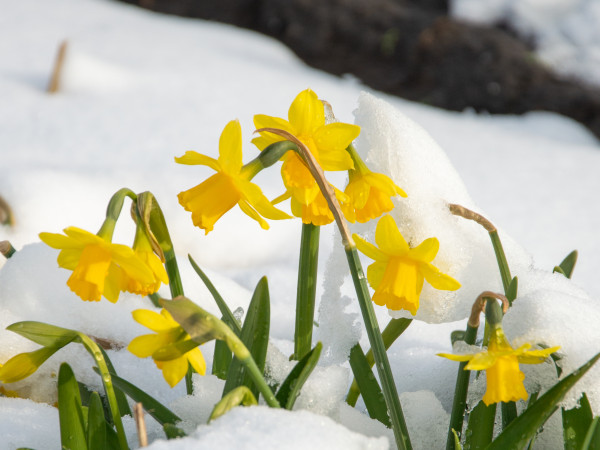There are many different types and characteristics of flower bulbs. Not every flower bulb can withstand cold temperatures. Some can easily stay in the ground during winter and flower again the next year, others do not survive the winter in the ground and still others even multiply from year to year. But what exactly is the difference and which bulbs and tubers belong to which category?
Non-hardy bulbs - summer flowering bulbs
Summer-flowering bulbs and tubers are generally not hardy and are colloquially also called annual bulbs. These include, for example, dahlias, gladioli, begonias or canna indica. Bulbs and tubers that are not winter-hardy should only be planted after the Ice Saints (mid-May), as they do not tolerate frost and the danger of frost has passed after the Ice Saints. These bulbs and tubers flower in summer and autumn. After flowering, they can remain in the ground for a while. If you want to store these bulbs and tubers for replanting next year, they must be taken out of the ground before the first night frost. The bulbs and tubers must be dried and then stored frost-free and dry. The bulbs and tubers are best stored with some peat moss.
Winter-hardy bulbs and tubers: spring-flowering bulbs
Winter-hardy - spring-flowering - bulbs, on the other hand, can be left in the ground after flowering and will flower next spring almost as beautifully as the first year. These flowers feel at home in almost any place. The only important thing is that they can grow undisturbed for years and find enough food. These bulbs and tubers need the winter cold to grow again in spring. Not all bulbs are equally hardy. In the case of hyacinths and daffodils, it is advisable to cover them with foliage in winter. This will protect them from heavy frost. Tulips can be left in the ground in areas with mild winters. After the flowering period, you should cut off the flowers. This way the plant has more energy to form a new bulb next spring and does not waste its energy on seed formation. Example of hardy bulbs: hyacinths, muscari, crocuses and tulips.
Naturalizing Spring Bulbs
The third type of spring-flowering bulbs are bulbs that are hardy and actually multiply from year to year. Many of these bulbs also occur in the wild. Like perennial bulbs, they are planted once and can remain in the ground after flowering. The special thing about naturalizing bulbs is that they reproduce every year and create new growth sites. However, the beauty of the flower is likely to diminish somewhat from year to year. So when planting, remember that in a few years you will need more space than in the first year of flowering. With these bulbs, the flowers do not need to be removed after flowering. The plant will continue to grow long enough and have enough energy to flower again the next year. Examples of bulbs that naturalize: snowdrops (galanthus), crocus, daffodils, scilla and wild tulips.


